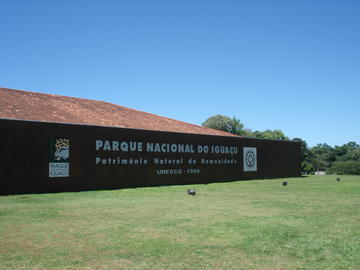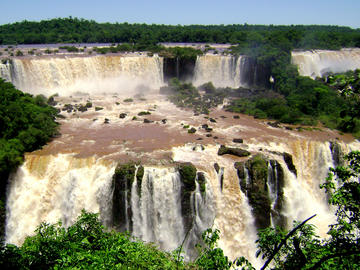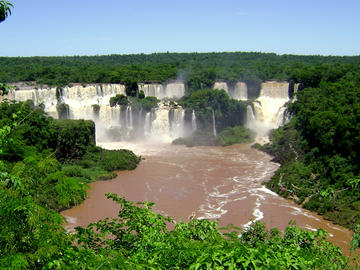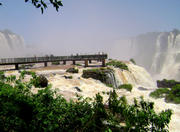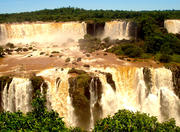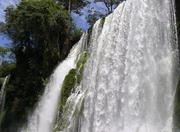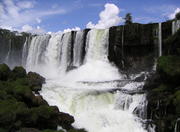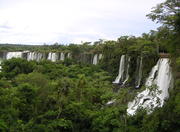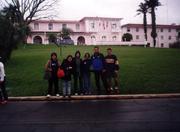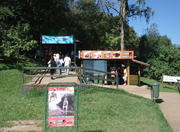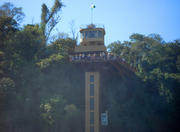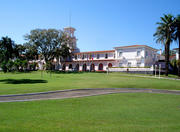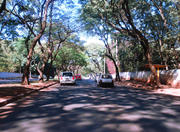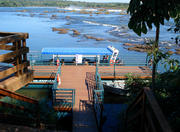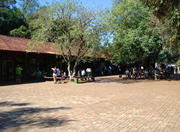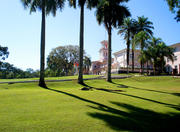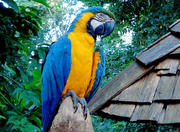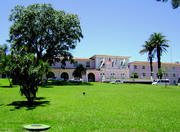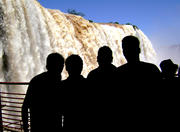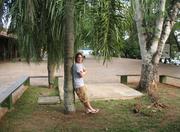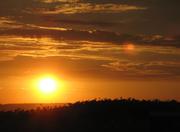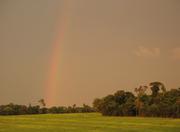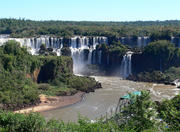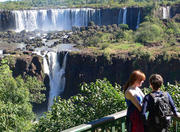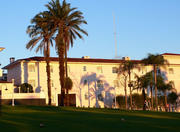Parque Nacional do Iguaçu Picture 12
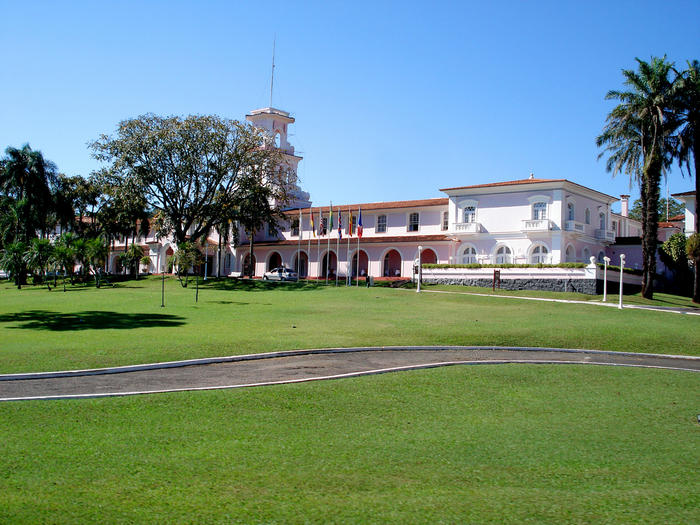
More information on Iguaçu National Park Photo by: Henrique Costa Pereira
Iguaçu National Park
The Iguazu National Park preserves the lush subtropical jungle that surrounds the Falls Area: 2 000 plant species and 400 birds. It has two fundamental circuits called Lower and Upper. In the lower circuit, the walkways will lead you to feel the drops of water from the bottom, while the higher circuit, you do so on the waterfall. Visitors still have a panoramic elevator. You can also fly over the Iguazu Falls from the helicopter Helisul as well as make trips by motor boat on the River. Besides its lush waterfalls and rainbows, you can meet other interesting features: the Visitor Center, the Zoo, Linha Martins, Tropicana Bird Park, the Trail of the Black Pit, the Macuco Falls, the Trail of the Banana , Statue Square and the Santos Dumont, honor the VASP to the "Father of Aviation", which used all his prestige with the Government of Paraná State in the transformation of the area of the Iguazu Falls in a National Park. The place used to be private property. The park protects the entire basin of Rio Floriano, a tributary of the Rio Iguaçu, a rarity in southern Brazil by the quality of water, its sources which are close to Highway BR-277 between Ceu Azul and Santa Terezinha de Itaipu. The Iguazu Falls, along with the Amazon jungle, was one of 28 finalists in the worldwide campaign to choose the New Seven Wonders of Nature organized by the New 7 Wonders Foundation.
Parque Nacional do Iguaçu, Paraná State, is a conservation unit in Brazil. Is located in the Far East of Paraná, 17 km from downtown Foz do Iguacu and only 5 km from International Airport of Foz do Iguacu. The National Park has a total area of 185,262.20 hectares, and therein lies one of the most spectacular set of waterfalls on Earth, the Iguazu Falls. It is administered by the Chico Mendes Institute for Biodiversity Conservation (ICMBio). It is also one of the few places in the Atlantic Forest that once covered more than 1.3 million square miles spread across 17 states. Today is unfortunately restricted to only 7.3% of the total. What is left is currently in small isolated areas, among them the so-called protected areas.
Until the 1950s, the region west of the state remained well preserved environmentally thereafter, the devastation process was more intense, isolating the Iguaçu National Park. In 1980, it was practically isolated in a similar situation occurring at the Serra do Mar, Paraná coast. As the biodiversity of fauna present, there were recorded 257 species of butterflies, but it is estimated that there are about 800. The animals cataloged are composed of 45 mammals, 12 amphibians, 41 snakes, 8 lizards, 18 fish, and 200 species of birds. In Brazil, the Natural Park is bordered by 14 cities: Foz do Iguacu, Mediatrix, Matelândia, Ceu Azul, São Miguel do Iguaçu, Santa Terezinha de Itaipu, Santa Tereza do Oeste, Marques, and Capanema Serranópolis Iguacu.
The Iguazu National Park was effectively created on January 10, 1939, through Decree-Law No. 1035 of the then President, Getúlio Vargas. On November 17, 1986, it received the prize, awarded by UNESCO for World Heritage Sites. The park had its first management plan prepared in 1981 and was revised only in 1999. Iguazu Falls and Brazilian tourist complex. In the year 1542, the Spaniard Alvar Nunez, appointed Governor of Paraguay, flew to Asuncion, when faced with the grandeur of Iguazu Falls. He was the first European to visit the region where only the Tupi-Guarani lived at the time. The year was 1876, the engineer André Rebouças makes the first proposal to the Emperor Pedro II on the establishment of the National Park. In 1916, Santos Dumont, in knowing the Falls of the Iguazu River, was so impressed with its beauty that he used his prestige to press the then governor of Paraná, Afonso Camargo, to create a National Park. The site then was a private property, and had to be declared local public interest. In 1930, land redistribution was expanded to create the Iguaçu National Park.
There are two other very large national parks in the state of Parana, Parque Nacional de Ilha Grande and Parque Nacional de Superagüi. Both are a fair distance from Curitiba, and will require additional planning to reach them.
Phone Number: 55 (45) 3521-4400
Homepage: http://www.cataratasdoiguacu.com.br/ (English version available)
e-mail: cataratas@catarataspni.com.br
More Photos of Parque Nacional do Iguaçu Picture 12
